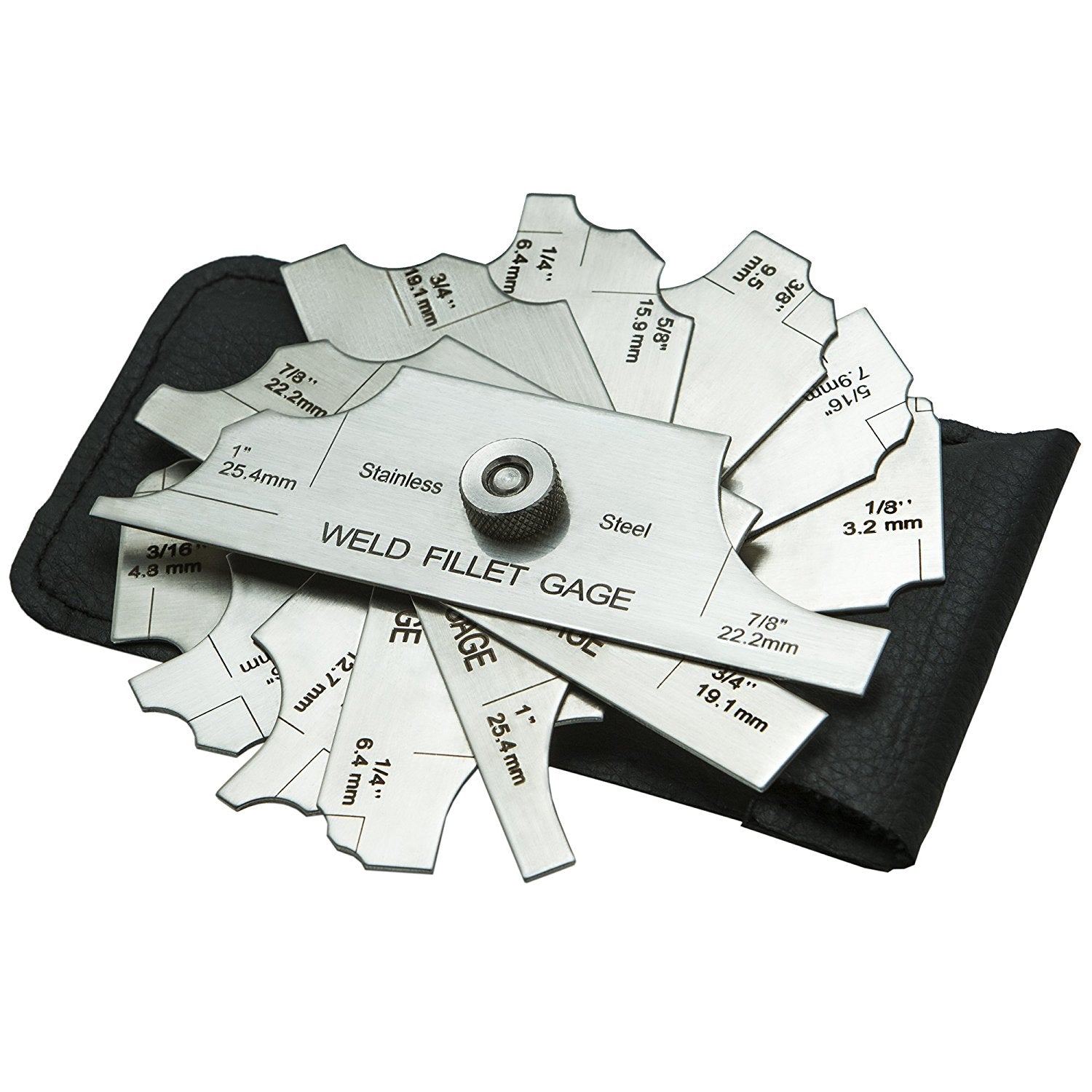Improving Your Welding Abilities: Focus on Gauge Fillet Welds
The Ultimate Overview to Fillet Weld Top Quality Control: Ensuring Toughness and Resilience in Your Welded Joints
In the realm of welding, guaranteeing the toughness and durability of fillet welds is critical for the stability of bonded joints. As we get started on this exploration of fillet weld quality control, we will certainly discover essential aspects that affect weld toughness, delve into effective evaluation techniques, and go over approaches for preventing common weld problems.
Value of Fillet Weld Quality Assurance
Ensuring correct fillet weld quality assurance is paramount in guaranteeing the architectural integrity and durability of welded elements in different markets. Fillet welds are commonly used in structural steelwork, bridges, pressure vessels, pipelines, and other vital facilities where the stamina of the weld is critical to overall safety and security and efficiency. Quality assurance procedures such as visual evaluations, non-destructive testing, and adherence to welding treatments assist identify potential issues like lack of fusion, insufficient infiltration, undercutting, or too much support.
Trick Aspects Affecting Weld Stamina
Achieving ideal weld toughness needs mindful consideration of numerous essential variables that influence the honesty and sturdiness of the bonded joint. The very first crucial aspect appertains joint preparation, which entails cleaning the base steels to get rid of any impurities that could deteriorate the weld. Additionally, the fit-up of the joint is vital to ensure appropriate infiltration and blend of the filler material.
The choice of the ideal welding technique and specifications likewise plays a substantial role in figuring out weld toughness. Factors such as warm input, traveling rate, and electrode angle can impact the quality of the weld. Maintaining the proper interpass temperature during multi-pass welding is important to prevent splitting and guarantee a strong bond between the layers.
Furthermore, the option of filler product and its compatibility with the base metals is essential for achieving high weld stamina. Making use of filler material with the ideal mechanical residential properties can enhance the general integrity of the weld. Post-weld warm therapy and correct examination techniques are vital actions in guaranteeing the toughness and longevity of the bonded joint.
Assessment Approaches for Weld Integrity

An additional essential evaluation technique is fluid penetrant screening, where a fluid color is put on the weld surface area - Gauge Fillet Weld. The color seeps right into any type of surface-breaking flaws, making them noticeable under UV light. This approach is reliable for identifying flaws that may not show up to the nude eye


Ultrasonic testing is additionally commonly made use of for checking weld honesty. High-frequency acoustic wave are routed into the weld, and any kind of disruptions in the audio wave pattern indicate prospective issues like fractures or absence of fusion.
These assessment Home Page approaches play an important duty in ensuring the high quality and integrity of welds, ultimately adding to the total strength and toughness of bonded joints in industrial setups.
Protecting Against Common Weld Flaws
In order to keep the structural integrity of welded joints in commercial applications, it is critical to execute safety nets to address typical weld issues. One common issue is absence of fusion, where the filler material stops working to bond effectively with the base steels, leading to weak areas in the weld. This can be protected against by ensuring proper warm control and utilizing the right welding method.
An additional constant concern is porosity, brought on by gas entrapment in the weld steel throughout the welding procedure. To avoid this, it is essential to clean the base metals thoroughly, use dry electrodes, and maintain a suitable welding environment with proper ventilation.
Additionally, cracks in welds can compromise the joint's strength. To prevent this defect, it is necessary to control the air conditioning rate after welding, make use of preheating when necessary, and choose appropriate welding criteria.
Enhancing Weld Sturdiness With Appropriate Methods
To boost the longevity and reliability of welded frameworks, utilizing advanced welding strategies is vital. One important technique to enhance weld durability is to make certain appropriate weld bead positioning. By placing the weld bead properly within the joint, the weld's stamina and resistance to fatigue can be significantly boosted. Bonuses Furthermore, making use of the right welding parameters, such as voltage, existing, and travel rate, is necessary for accomplishing a durable weld. These specifications directly influence the weld's penetration, blend, and general top quality, contributing to its long life.
Selecting the appropriate filler steel and ensuring the cleanliness of the base metals can avoid additions and other problems that might jeopardize the weld's longevity. By implementing these proper techniques, site web welders can guarantee that their welded joints display exceptional strength and longevity, fulfilling the highest possible top quality criteria.
Verdict
To conclude, preserving high quality control standards for fillet welds is essential for ensuring the toughness and longevity of bonded joints. By comprehending the key elements affecting weld toughness, making use of assessment techniques for weld integrity, preventing usual weld flaws, and employing correct methods, welders can enhance the total longevity of their welds. It is imperative to focus on quality assurance actions to create resilient and reputable bonded joints.
In the realm of welding, ensuring the stamina and resilience of fillet welds is extremely important for the stability of bonded joints. As we begin on this expedition of fillet weld high quality control, we will certainly discover essential aspects that influence weld toughness, delve right into effective assessment methods, and go over strategies for stopping common weld flaws.Achieving ideal weld toughness requires cautious consideration of different key aspects that affect the integrity and toughness of the bonded joint (Gauge Fillet Weld).In conclusion, preserving high top quality control standards for fillet welds is vital for ensuring the strength and toughness of bonded joints. By understanding the crucial variables affecting weld stamina, using examination methods for weld stability, stopping usual weld defects, and employing appropriate strategies, welders can boost the total resilience of their welds